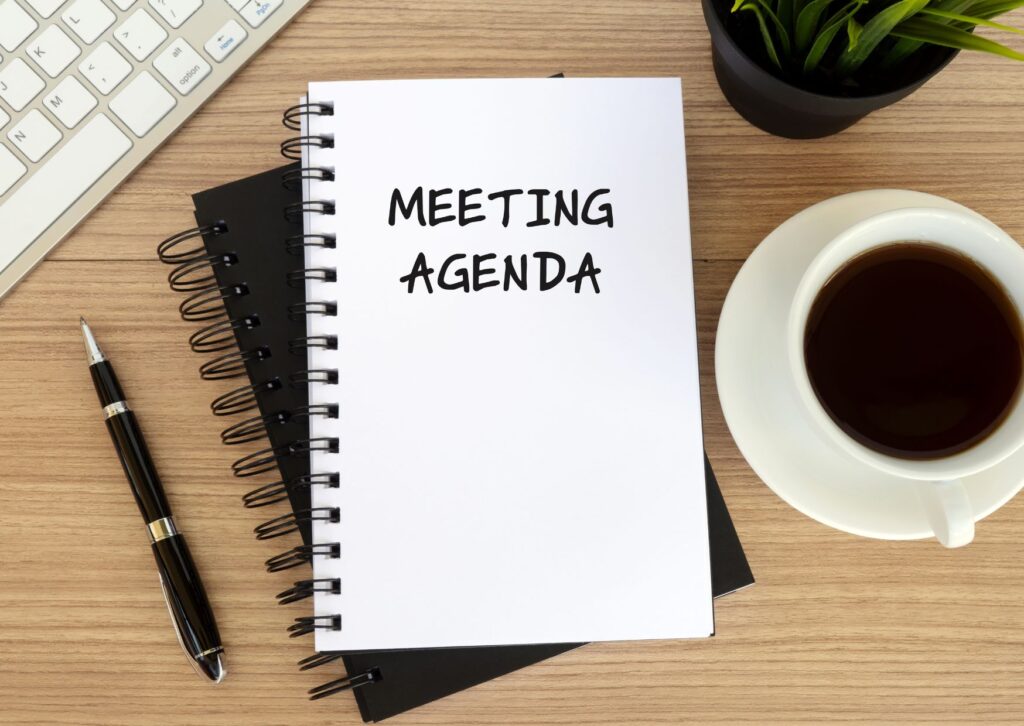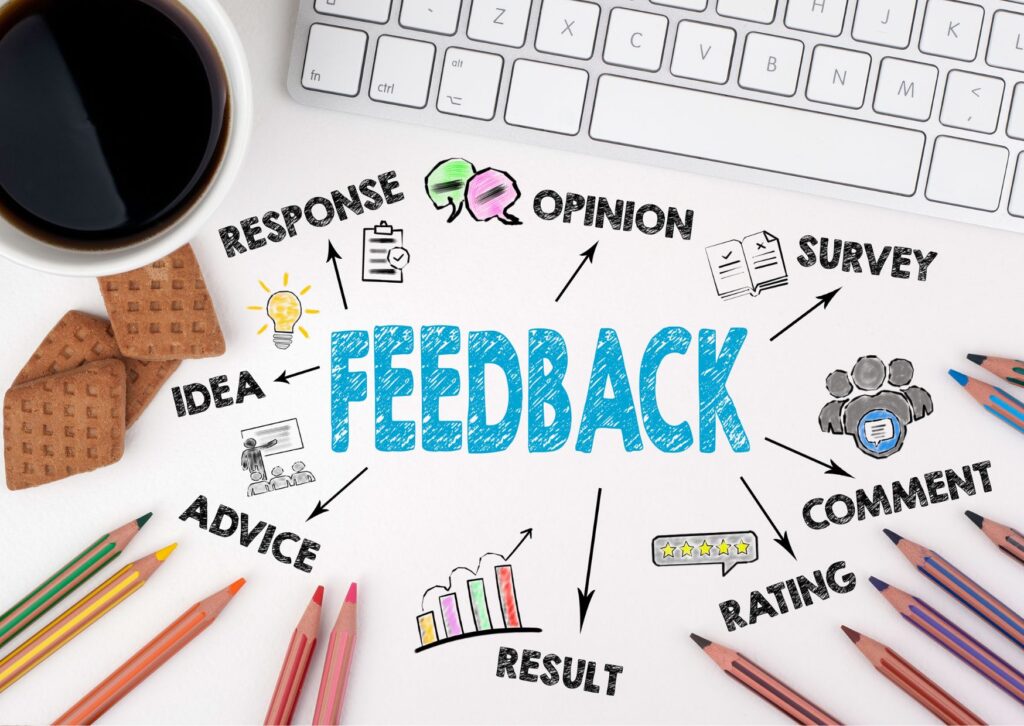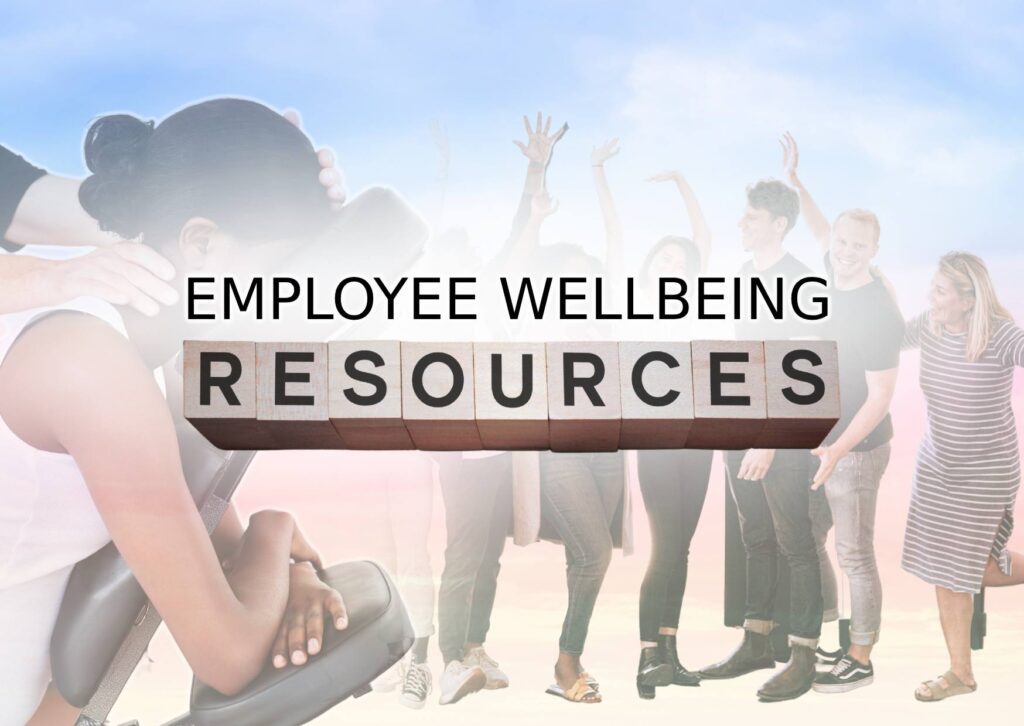How to Run Successful Board Meetings: A Comprehensive Guide
Board meetings are a part of most large and successful organisations.
In the whirlwind of today’s business landscape, they serve as crucial junctures where leaders come together, strategies are crafted, and pivotal decisions are made.
This guide is designed to shed light on the nuances of board meetings, ensuring you navigate them with confidence and clarity.
Contents
Why are Board Meetings Important?
How to Prepare for Board Meetings?
How to Conduct a Successful Board Meetings?
Adding a Wellbeing Element to Your Board Meeting
Common Challenges Running Board Meetings
Leveraging Technology for Efficient Board Meetings
What is a Board Meeting?
A board meeting is a formal gathering of a company’s board of directors.
These are the individuals entrusted with the responsibility of making high-level decisions and setting the strategic direction for the organisation.
Typically held at regular intervals, these meetings are a platform for discussion, deliberation, and decision-making on various matters related to the company’s operations, finances, and future.
Unlike casual team huddles or departmental check-ins, board meetings have a structured format.
They follow a predetermined agenda, and every topic discussed is meticulously documented in the form of minutes.
These minutes serve as an official record of the proceedings and decisions made during the meeting.
In essence, a board meeting is where the company’s present meets its future, with each decision taken having the potential to shape the organisation’s trajectory.

Why are Board Meetings Important?
Board meetings are more than just scheduled gatherings of high-ranking individuals, they can be the lifeblood of an organisation’s strategic direction.
Here’s why they hold such significance:
Strategic Direction
At board meetings, the company’s long-term vision is discussed, refined, and set into motion.
It’s where big-picture goals are established, ensuring the organisation stays on a path aligned with its mission.
Decision-making Hub
Crucial decisions, from mergers and acquisitions to major investments, are often made during these meetings.
The collective wisdom of the board ensures that decisions are well-informed and in the best interest of the company.

Accountability
Board meetings hold executives accountable.
Regular updates on company performance, challenges faced, and progress toward goals ensure that everyone is answerable for their responsibilities.
Risk Management
In a dynamic business environment, risks are inevitable.
Board meetings provide a platform to identify, discuss, and strategize on mitigating potential threats to the organisation.
Stakeholder Communication
The minutes and outcomes of board meetings are vital communication tools.
They inform stakeholders, including shareholders, employees, and the public, about the company’s direction and health.
Team Cohesion
Regular interactions at board meetings foster a sense of unity among directors.
They get to understand each other’s perspectives, leading to more collaborative and effective decision-making.
In a nutshell, board meetings are the steering wheel of an organisation, guiding it through challenges and toward opportunities, ensuring its growth and sustainability.

How to Prepare for Board Meetings?
Preparation is the key to a successful board meeting.
A well-prepared meeting not only ensures productive discussions but also fosters a sense of respect and professionalism among board members.
Here’s 9 steps to guide your meeting preparation:
Set a Clear Agenda
Begin by outlining the topics to be discussed.
A clear agenda provides direction to the meeting, ensuring that all critical issues are addressed.
Distribute the agenda in advance so members have ample time to prepare.

Gather Relevant Documents
Whether it’s financial reports, performance metrics, or research data, ensure all necessary documents are ready and organised.
Digital copies can be shared ahead of time, allowing members to review and come with questions or insights.
Choose the Right Venue
The environment plays a crucial role in the meeting’s effectiveness.
Opt for a quiet, well-lit room with comfortable seating.
If members are joining remotely, ensure a stable internet connection and functional conferencing tools.
Revisit Previous Minutes
Reviewing the minutes of the last meeting helps in tracking progress, understanding pending action items, and setting the context for new discussions.
Prepare Mentally
As a wellbeing speaker, I can’t stress enough the importance of mental preparation.
Take a moment to centre yourself, understand the meeting’s objectives, and approach it with an open and collaborative mindset.
Engage Stakeholders
If there are specific topics that involve certain departments or teams, consider inviting a representative.
Their insights can provide a ground-level perspective, aiding in more informed decision-making.
Logistics Check
Ensure all logistical aspects, from projectors to refreshments, are in place.
A smooth-running meeting keeps members engaged and focused.
Set Expectations
If there are sensitive topics on the agenda or potential areas of conflict, set the tone at the beginning.
Emphasize the importance of constructive discussions and mutual respect.
By investing time and effort in preparation, you pave the way for a board meeting that’s not only efficient but also enriching for all participants.

How to Conduct a Successful Board Meetings?
Conducting a board meeting is an art that balances structure with flexibility, ensuring discussions are both productive and inclusive.
Here’s a guide to help you lead a successful board meeting:
Start on Time
Punctuality sets a professional tone.
Beginning on time shows respect for everyone’s schedules and underscores the meeting’s importance.
Follow the Agenda
While it’s essential to allow for organic discussions, adhering to the agenda ensures all topics are covered.
It provides a roadmap, keeping the meeting on track.
Encourage Participation
Every board member brings a unique perspective.
Foster an environment where all voices are heard.
Ask open-ended questions and invite quieter members to share their views.

Stay Focused
It’s easy for discussions to veer off-topic.
Gently steer conversations back to the agenda if they start to drift.
A time limit for each topic can also help maintain focus.
Promote Constructive Discussions
Differences of opinion are natural.
Encourage board members to approach disagreements with an open mind, seeking understanding rather than confrontation.
Document Decisions
Appoint a designated person to take minutes.
Capturing decisions, action items, and key discussions ensures there’s a clear record to refer back to.

Allocate Time for New Business
While the agenda provides structure, it’s beneficial to allocate time for unforeseen topics or new business that board members might want to introduce.
Conclude with Clarity
Summarise the meeting’s key outcomes and decisions.
Ensure everyone is clear on the next steps and responsibilities.
End on Time
Just as starting punctually is crucial, ending on time respects everyone’s commitments.
If certain topics need more discussion, consider scheduling a follow-up or addressing them in the next meeting.
Seek Feedback
Continual improvement is vital.
After the meeting, solicit feedback on what went well and areas of potential enhancement.
This iterative approach ensures each meeting is more effective than the last.
By leading with intention and fostering a collaborative atmosphere, you can ensure your board meetings are not just routine gatherings but pivotal moments that drive your organisation forward.

Adding a Wellbeing Element to Your Board Meeting
In the hustle and bustle of high-stakes decisions and strategic discussions, it’s easy to overlook the human element of board meetings.
However, prioritising the mental and emotional wellbeing of board members can significantly enhance the quality of discussions and decisions.
Here’s how you can infuse a touch of wellbeing into your board meetings:
Hire a Wellbeing Speaker
Start the meeting with a short talk from a wellbeing speaker.
They can offer insights into stress management, harnessing gratitude, improving health, and more!
This not only sets a positive tone for the meeting but also equips members with tools to handle intense discussions with calm and clarity.

Wellbeing Workshops
Consider dedicating a segment of the meeting to a wellbeing workshop.
Whether it’s a brief meditation session, breathing exercises, or a discussion on work-life balance, these workshops can rejuvenate the board members, making them more present and focused.
Mindful Breaks
Instead of rushing from one agenda point to the next, incorporate short, mindful breaks.
A few minutes of stretching or deep breathing can do wonders for concentration and energy levels.
Wellbeing Resources
Provide board members with resources on wellbeing.
This could be in the form of book recommendations, apps, or articles.
When board members prioritise their wellbeing outside of meetings, they bring a more balanced and holistic perspective to discussions.

Feedback on Wellbeing
Make wellbeing a regular point of discussion.
Ask board members for feedback on how they feel during meetings and what additional support they might need.
This not only underscores the importance of wellbeing but also helps in tailoring future meetings to be more supportive.
Physical Environment
The ambiance of the meeting room plays a role in wellbeing.
Ensure the room is well-lit, with comfortable seating.
Plants, calming colours, and even the arrangement of chairs can influence the mood and energy of the meeting.
By integrating wellbeing into board meetings, you’re sending a clear message that the organisation values its leaders.
When leaders feel valued and supported, they’re better equipped to guide the organisation towards success.

Common Challenges Running Board Meetings
While board meetings are essential for an organisation’s direction and decision-making, they aren’t without their challenges.
Recognising these challenges is the first step toward addressing and overcoming them.
Here are some common challenges faced during board meetings:
Time Management
With multiple topics to cover and passionate discussions, meetings can easily overrun.
This not only disrupts schedules but can also lead to decision fatigue.
Differing Opinions
Board members come from diverse backgrounds and experiences.
While this diversity is a strength, it can also lead to prolonged debates and disagreements.

Staying On-Topic
Going off-topic can cause important issues to be missed or hurriedly discussed in meetings.
Remote Participation
With the rise of virtual meetings, ensuring that remote participants are as engaged and heard as those in the room becomes a challenge.
Information Overload
Board members often have to digest vast amounts of data and reports.
Ensuring that this information is presented in a concise and understandable manner is crucial.
Decision Paralysis
Sometimes, the weight of a decision or the lack of consensus can lead to indecision, with topics being deferred to future meetings.
Conflicts and Personal Dynamics
Interpersonal dynamics and past conflicts can influence discussions, leading to unproductive meetings.

Lack of Preparation
When board members come unprepared, it slows down the meeting and can lead to uninformed decisions.
Wellbeing Concerns
Long meetings, intense discussions, and high stakes can take a toll on board members’ mental and emotional wellbeing.
Technological Glitches
In the digital age, a simple tech glitch can disrupt the flow of a meeting, especially if it’s virtual.
Awareness of these challenges allows for proactive measures.
Whether it’s setting strict time limits, using facilitation techniques, or ensuring regular wellbeing check-ins, addressing these challenges head-on ensures that board meetings are both productive and positive experiences.

Leveraging Technology for Efficient Board Meetings
In the digital age, technology is a necessity, especially when it comes to facilitating efficient and effective board meetings.
Here’s how you can harness the power of technology to elevate your board meetings:
Meeting Platforms
Tools like Zoom, Microsoft Teams, or Google Meet offer robust features for virtual meetings.
They provide clear audio and video, screen sharing, and breakout rooms, ensuring that remote participants are as engaged as those in the room.

Agenda and Minute Software
Platforms like Boardable or BoardEffect allow for the easy creation, distribution, and storage of meeting agendas and minutes.
This ensures that all members have access to essential documents in real-time.
Collaboration Tools
Tools like Slack or Trello facilitate communication and collaboration outside of formal meetings.
They can be used to share updates, discuss agenda points, or even vote on specific issues.
Document Sharing and Storage
Cloud storage solutions like Google Drive or Dropbox ensure that all board members have access to the necessary documents, reports, and data, regardless of their location.
Digital Whiteboards
Platforms like Miro or MURAL allow for real-time brainstorming, mind mapping, and strategy planning, making discussions more interactive and visual.
Polling and Voting Tools
For decisions that require a vote, tools like Poll Everywhere or Mentimeter can facilitate quick and anonymous voting, speeding up the decision-making process.

AI-Powered Insights
Advanced tools can analyse past meetings, participant engagement, and discussion topics to provide insights and recommendations for future meetings.
Wellbeing Integrations
Given the importance of mental and emotional wellbeing, consider integrating short meditation or breathing exercise apps into the meeting’s flow, especially during longer sessions.
Tech Support
Always have a tech support person on standby, especially for crucial meetings.
This ensures that any technological glitches are addressed promptly, minimising disruptions.
Cybersecurity
With the increasing reliance on digital tools, ensuring the security and privacy of board discussions is paramount.
Invest in secure platforms and encourage board members to follow best practices in cybersecurity.
By strategically leveraging technology, board meetings can be transformed from mere discussions to dynamic, collaborative, and highly productive sessions that drive the organisation forward.

Board meetings stand as pivotal moments that shape an organisation’s journey.
By understanding their essence, preparing adequately, embracing technology, and addressing challenges head-on, we can transform these meetings into powerful catalysts for growth and success.
As we prioritise both efficiency and wellbeing, we not only make decisions that benefit the company but also nurture the minds and spirits of those making them.
Here’s to successful board meetings that drive progress!
What is a Board Meeting?
Why are Board Meetings Important?
How to Prepare for Board Meetings?
How to Conduct a Successful Board Meeting?
Author
Tyler Lowe – Health & Wellbeing Speaker
BSc Sport & Exercise Rehabilitation


